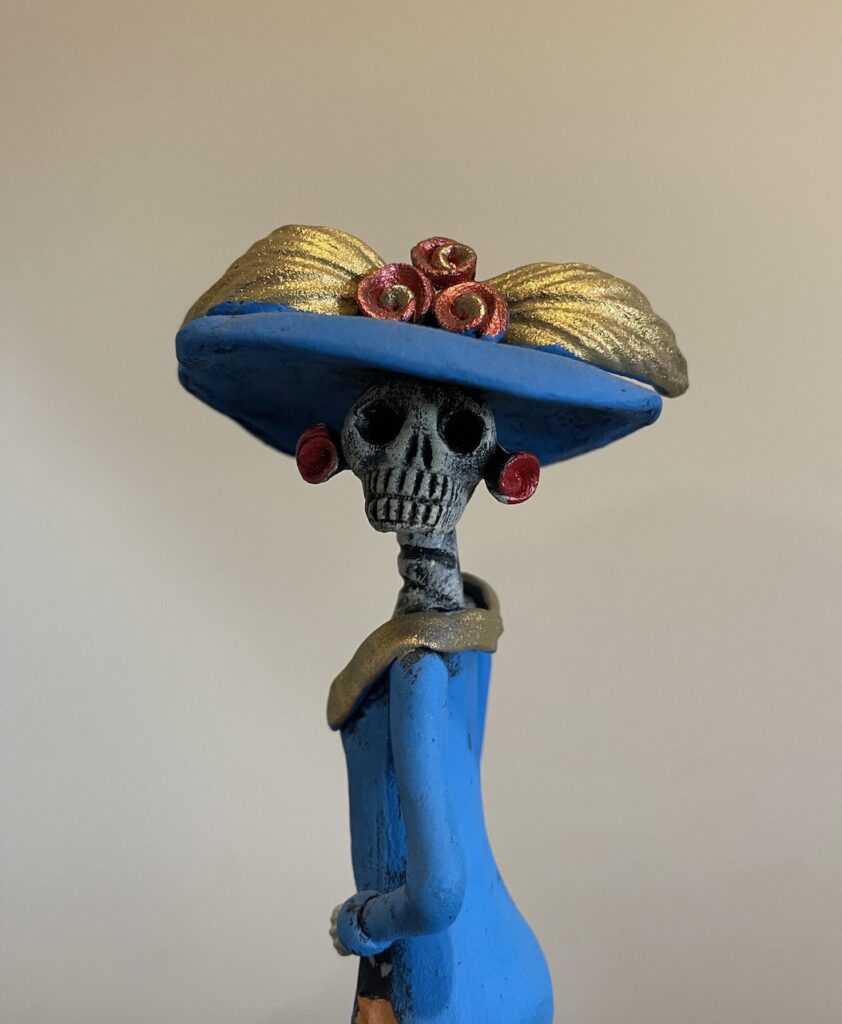Despite the pain of loss and love, we are once again at the time of year when a centuries old Mexican tradition tells us to rethink our sorrow and, instead, celebrate the lives of those no longer here. To do that, the tradition says, honor them with notes, share their pictures and mementos, especially those special things that add melody to memory. Tell them, in the most heartfelt way, that their absence, while tempered by time, remains forever special but also tinged with melancholy.

At the El Pueblo Museum, which has seen its Dia de los Muertos celebration grow over the years, its ofrenda or offering—an altar for the collection of memories, notes, snapshots and special reminders—is once again taking form. In a matter of days, it will reach full bloom.
“Right now,” said El Pueblo’s Zach Werkowitch, “we’re probably at 75 percent.” Of course, it’s just a guess. When the ofrenda blossoms, it will have certainly grown. It will, no doubt, be larger than it has been over the COVID years when normalcy took a holiday and public gatherings, including Pueblo’s Dia de los Muertos celebration, were cancelled or dramatically pared down.
This year’s Dia de los Muertos—the Day of the Dead—is a weeks-long celebration that ends the first week of November. The final day of the event will be marked with a community celebration replete with face painting and food and drink. The 2022 version will also reflect not only the loss of visitors’ loved ones, but also the loss of museum family who died from COVID “We lost a number of museum volunteers during the pandemic,” said the Museum’s Director of Community Affairs. A few staff members will also be remembered.
For the second year in a row there will also be a photograph on the altar of a man who lived 600 miles away and, said his son, may have never even heard of this special and colorful celebration. “I lost my dad to COVID,” said Werkowitch. “I couldn’t have been with him even if I was there…It was really awful.” Last year, said the Kansas City native, when he placed his father’s picture on the altar among the scores of others, “I did feel during the evening like the whole community was also honoring him.” The feeling was shared by so many others who also celebrated a loved one.
Explaining the origins of Dia de los Muertos is a bit easier than pinpointing its precise genesis. The Aztecs had a tradition of placing real human skulls on altars for the dead. But when the Spanish arrived and witnessed this ceremony, they were revolted by the imagery. But their revulsion didn’t put an end to the tradition. Instead, they substituted skulls made of sugar and paste or clay for real human bones. Because sugar was available and abun- dant to the rich and poor, suddenly various sizes of skulls fashioned from sugar became the accepted substitute. Soon enough, elaborate designs were added to the skulls.
While this unique hybrid celebration combining the influences of indigenous, Catholic and Spanish cultures coincides with Halloween, it is not a Halloween celebration. It is also not commemorated on October 31st. Instead, it is observed over two days beginning on November 1st. It signifies the moment when heaven’s gates open allowing the dead, beginning with children, to come back to be with their families. Children who have passed—los Angelitos—are allowed to remain here for 24 hours before returning to heaven. The next day, it is the adults who are allowed to return.
In Pueblo, Werkowitch said the museum is expected to open its doors over the next several days—admission free—to several thousand people including many bringing their own offerings for the Dia de los Muertos event. The ever-growing collection, said Werkowitch, is a cornucopia of items reflecting the diversity of the city’s population. “There are Latino and non-Latino faces on the ofrenda right now.”
While El Pueblo Museum’s ofrenda has become a cultural touchstone in southern Colorado, the centuries old marking of El Dia has also experienced a similar explosion in popularity in many other places. The result has been a backlash that some have labeled cultural appropriation. Day of the Dead iconography has become ubiquitous in fashion and on faces in every American time zone. The elaborate designs have become a part of seasonal events and not everyone is pleased.
Champlain College writer Evania Meehan sees its spread as “an act of diluting a culture or practice of its original value by using it for an awful joke, fashion trend, trashy party.” Meehan, who is Latina, writes that she doesn’t want an important cultural celebration to devolve into kitsch with images adorning paper plates and napkins or transformed into garish tattoos. “We welcome you to learn our customs, we love sharing our heritage, but we don’t appreciate when you look at it from the surface value to use as an excuse to paint your face and get drunk.”
Werkowitch invites anyone to add to El Pueblo’s ofrenda up until the end of the celebration. Any items—snapshots or other offerings—will be returned to the families. Those items not returned will be stored and placed on next year’s ofrenda.
History Colorado, which has historical outposts across the state, will also have Dia de los Muertos ofrendas in Trinidad and Fort Garland. Fort Garland will also host a community event.




